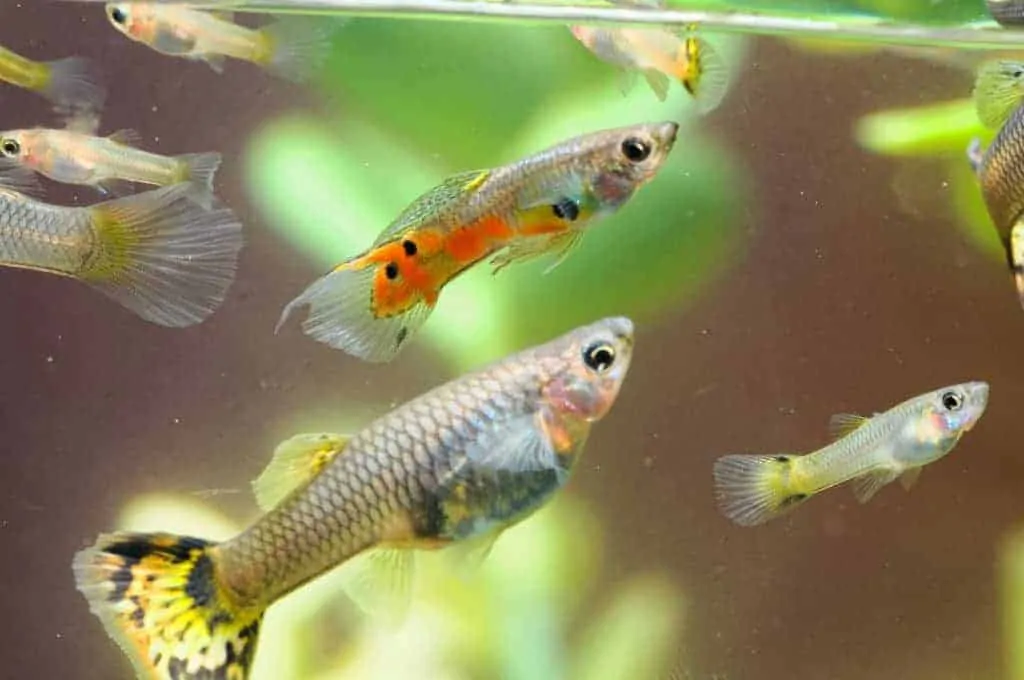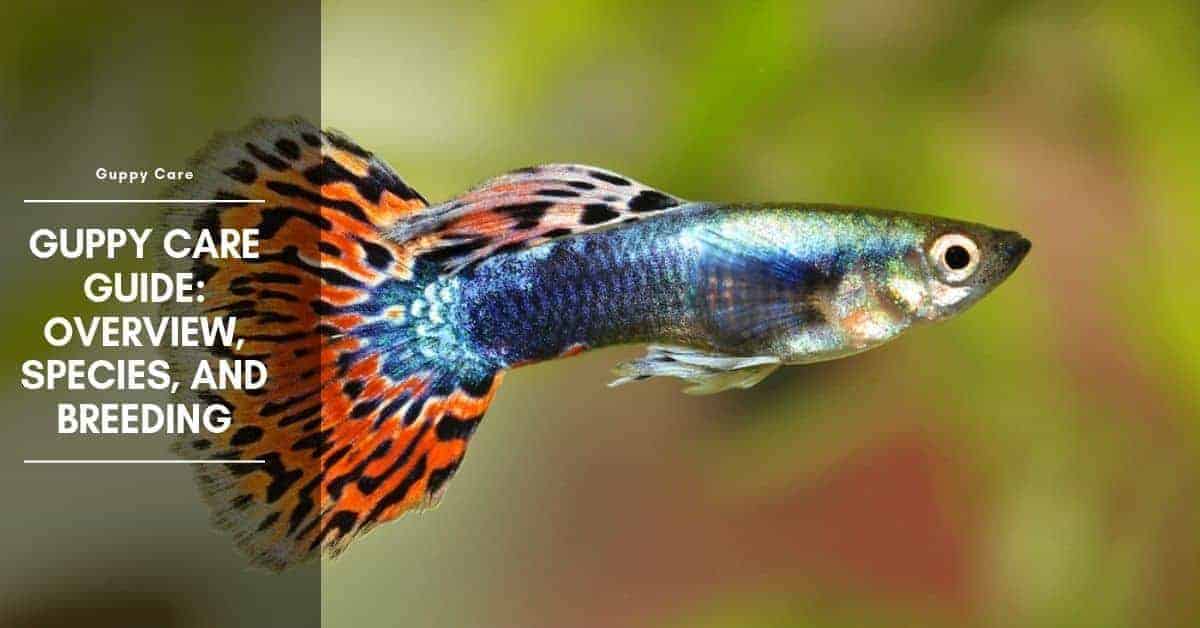Guppy is one of the best known of all tropical fish, the guppy is named after Rev.Thomas Guppy, who identified it on the Caribbean island of Trinidad. The several thousand species available to aquarists today are far removed from their wild ancestors and can be found in a wide range of colors and with many different body patterns and fin types.

Overview
| ORIGINS: | South America, occurring in the Caribbean and in South America north of the Amazon |
| SIZE: | 2 in (5 cm) |
| DIET: | Prepared foods and small live foods |
| WATER: | Temperature 70–77°F (21–25°C); hard (100–150 mg/l) and alkaline (pH 7.5) |
| TEMPERAMENT: | Placid and social |
| Tank Size: | Minimum 5 gallons |
| Lifespan: | 2 years |
Guppies colors
The different color variations are displayed most impressively in male fish, which are naturally more colorful as well as smaller than females. Guppies show well as a group in a single-species tank, but they can also be kept with other non-aggressive fish as part of a community aquarium.
Female guppy
The female Guppy gives birth to live offspring, but unfortunately, these are likely to be cannibalized soon after birth, even in a breeding tank set up, unless the young can escape out of reach.
Various breeding traps are available for this purpose. When buying these fish, it is worth remembering that the largest females give birth to correspondingly bigger broods.
Guppy breeding
One of the most significant factors to consider when breeding guppies species is that a female-only needs to mate once in order to continue producing young throughout her life – potentially giving birth to seven or more broods using sperm stored in her body.
This is why even if you choose a well-marked male and female from the same tank in a pet store, the likelihood will be that at least some of the young will not be the offspring of that particular male (although the majority of offspring are likely to be the result of the most recent mating).
This also explains how females kept on their own can give birth to young. The only way to be sure of the parentage of guppies is to separate the sexes as early as possible.
Transfer the fry to a separate tank
As soon as the young males can be recognized by their gonopodium – usually when they are about three weeks old – they should be transferred to a separate tank.
The females will be noticeably larger than the males from three months onwards, by which time some of the males will already be sexually mature. A female guppy will have her first brood approximately a month after mating.
How many babies can a guppy have?
The number of offspring produced is likely to be small at first, sometimes no more than 10, but it increases to between 50 and 100 per brood as the female grows bigger. Some strains are more prolific breeders than others.
Gravid spot on guppy
Breeders of popular livebearers have relied on the appearance of the dark gravid spot to indicate that a female is about to give birth. This spot is formed by the dark lining of the abdomen, known as the peritoneum, which bulges against the sides of the female’s body just before she gives birth, pushed out by the increasing size of her brood. The gravid spot is less apparent in swordtails, simply because the female’s abdominal wall is more muscular. Once the gravid spot has appeared, the female should not be moved, otherwise, she is likely to abort her brood.

Guppy species
Wild Guppy
These fish may be found in brackish water, and the addition of salt to their aquarium is recommended. Wild Guppies are not readily available today, and domestic strains will prove far more adaptable.
German Yellow Guppy
Named after its country of origin, this is a particularly striking variety in which the enlarged caudal fin and the dorsal fin are both yellow. Fin shape, as well as color, is important in fancy guppies.
Blonde Guppy
The red caudal fin and rear part of the body contrast with the lighter blonde coloration seen on the underparts near the head. The use of color food is often recommended for red strains of guppies.
Red Tail Half-Black Guppy
As with other strains created by selective breeding, fertility may be impaired if these fish are heavily inbred. Not all such strains are commercial products; some are bred by enthusiasts only.
Silver-Backed Tuxedo Guppy
The distinctive black area on the flank varies in size and density between individuals.
Rainbow Cobweb Delta Guppy
This is another “composite variety,” so-called because of its varied coloration, cobweblike pattern, and the delta shape of its caudal fin.
Golden Snakeskin Delta Guppy
This is one of a number of guppy species that have become very popular in Russia. It is thought that the famous Moscow Blue strain may have evolved from the Snakeskin line.
Red Varitail Guppy
Broad-tailed guppies like the Red Varitail tend to be more popular than those with narrow tails because the wide caudal fin allows for some striking tail patterns to be developed.
Gold Cobra Delta Guppy
Of American origin, Cobra Guppies are now popular internationally. The male is always more colorful than the female, although she may display a patterned caudal fin in some strains.
Golden Lyretail Guppy
The upper and lower rays of this guppy’s caudal fin are greatly extended, creating a sleek appearance. It is important in the lyre-tailed forms that these two areas are symmetrical and even in size.
Tuxedo Rainbow Delta Guppy
When selecting these and other delta-tailed guppies, be sure to check that there is no significant damage to the broad caudal fin, which could lead to a life-threatening infection.
Cornflower Blue Delta Guppy
The exact patterning on the broad tail varies between individuals, allowing them to be distinguished quite easily, but the body coloration should be a consistent feature.

Hi, my name is Sean, and I’m the primary writer on the site. I’m blogging mostly about freshwater and saltwater aquariums, fish, invertebrates, and plants. I’m experienced in the fishkeeping hobby for many years. Over the years I have kept many tanks, and have recently begun getting more serious in wanting to become a professional aquarist. All my knowledge comes from experience and reading forums and a lot of informative sites. In pursuit of becoming a professional, I also want to inspire as many people as I can to pick up this hobby and keep the public interest growing.
Read more about Sean.
Please join also my Facebook group.

